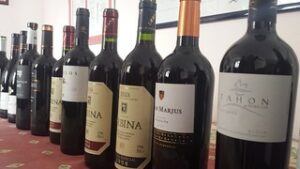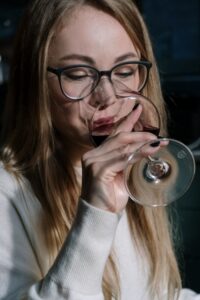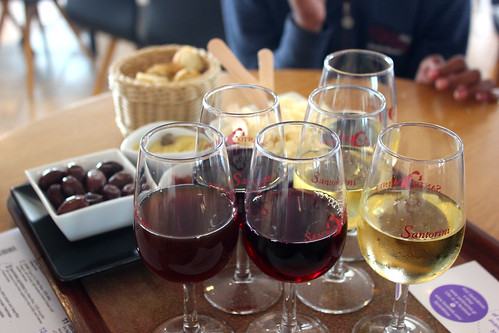Wine tasting isn’t just about sipping a drink; it’s about exploring a world of flavors, aromas, and experiences. Understanding the fundamentals is the first step toward enhancing your palate and appreciation for this timeless beverage.
Wine is a complex mixture of components, each playing a vital role in the overall experience. Acidity, tannins, sweetness, and alcohol levels work together to create unique profiles. Acidity gives wine its crispness, tannins provide structure, sweetness adds balance, and alcohol offers body and warmth.
The perception of flavors and aromas goes beyond just taste buds. It’s a sensory journey involving smell, taste, and even texture. The human tongue can detect basic tastes like sweet, sour, salty, and bitter, but it’s your sense of smell that captures the intricate aromas. Combining these senses lets you fully experience and appreciate good wine.
Developing your palate takes time and experience. As you taste different wines, you’ll start noticing subtle differences and nuances. With practice, you can train your senses to pick up on various flavor notes, making the tasting experience more enriching and enjoyable. Keeping an open mind and being willing to explore new tastes are crucial steps in this journey.
Preparing for the Perfect Wine Tasting Experience
The right setup can greatly influence your wine tasting experience. Let’s start with glassware. A good wine glass should have a bowl that tapers towards the top, which helps concentrate the aromas. Using the correct glass for different types of wine isn’t just about aesthetics; it actually affects how you perceive the wine.
The environment plays a big role too. Proper lighting allows you to observe the wine’s color and clarity, while a neutral, pleasant temperature keeps both you and the wine comfortable. A clutter-free space free of strong smells ensures that no external odors interfere with the wine’s aroma.
The temperature of the wine itself is key. Reds are best served slightly below room temperature, while whites and rosés should be chilled. Sparkling wines need to be even cooler. Serving wine at the right temperature helps bring out its best qualities. Remember, you can always warm a wine in your hand, but chilling it takes more time.
Arrange your wines in the correct tasting order, usually from light to dark, or sparkling first if included. This prevents stronger flavors from overwhelming your palate early on. Keeping a palate cleanser handy, like water or plain bread, can help reset your taste buds between tastings, ensuring each wine stands on its own merits.

Mastering the Wine Tasting Techniques
There’s a method to the art of wine tasting that maximizes your sensory experience. The five S’s—See, Swirl, Smell, Sip, and Savor—serve as your guide.
Start by observing the wine’s appearance. Hold your glass against a white background to assess the color and clarity. A wine’s hue can hint at its age and variety. Swirling the wine in your glass helps release its aromas, enhancing the smelling stage.
Smelling comes next. Take a couple of short sniffs followed by a deep inhale. Try to identify familiar scents first—fruits, spices, herbs—before moving on to more nuanced aromas. This preliminary sniff primes you for what’s to come.
The main event is the tasting. Take a small sip and let the wine coat your palate. Notice the initial flavor, which transitions to mid-palate sensations, and finally the finish. Pay attention to how long the aftertaste lingers, as it often reveals the wine’s complexity.
Finally, savor the experience. Reflect on the overall balance and harmony of the wine. This is where you bring together all your observations and enjoy how they interact. Savoring helps you appreciate the nuances and depth, making each tasting moment memorable.

Advanced Tasting Skills: Detecting Subtleties and Flaws
Once you have the basics down, it’s time to refine your skills. Noticing the subtler elements of wine can add a new dimension to your tasting experience. Observing wine legs or tears, those streaks that form on the inside of your glass after swirling, can tell you about the alcohol and sugar content.
Recognizing wine faults is crucial for a seasoned taster. Common issues like oxidation, cork taint, and volatile acidity can negatively impact the wine. Learning to spot these flaws helps you appreciate a well-made wine even more.
Identifying complex flavor notes requires practice. Break down the flavors into categories like fruity, floral, earthy, and spicy. With time, you’ll start pinpointing specific fruits, flowers, or spices, enriching your tasting vocabulary.
Training your senses can be fun and challenging. Blind tastings are a great way to hone your abilities, as they force you to rely solely on your sensory impressions. Try comparing wines from the same region but different vineyards to notice subtle differences in terroir.
Building a wine-tasting vocabulary helps in describing what you taste in detail. Terms like ‘oaky,’ ‘buttery,’ ‘minerally,’ and ‘tannic’ become tools for articulating your experience. This precise language makes it easier to share your insights and preferences, enhancing group tastings and discussions.
Taking Your Wine Tasting Journey to the Next Level
Joining a wine tasting group or club opens up new opportunities for learning and exposure to a wider range of wines. Sharing the experience with others who have varied levels of expertise offers fresh perspectives and insights.
Attending professional wine tasting events and festivals can be an eye-opener. These gatherings often include tastings led by sommeliers and winemakers, providing a deeper understanding of different wine styles and production methods.
Keeping a wine tasting journal helps track your progress and preferences. Jot down your thoughts, aromas detected, flavors tasted, and overall impressions. Over time, this journal becomes a valuable resource for selecting wines and noting changes in your palate.
Understanding the fundamentals of wine and food pairing enriches both your tasting and dining experiences. Basic principles, like matching intensity or balancing acidity, enhance the enjoyment of both food and wine.
Exploring wine regions and vineyards worldwide puts your skills to the test in real-world settings. Touring wineries, meeting the people behind the wines, and experiencing the terroir firsthand bring the tasting journey full circle.

